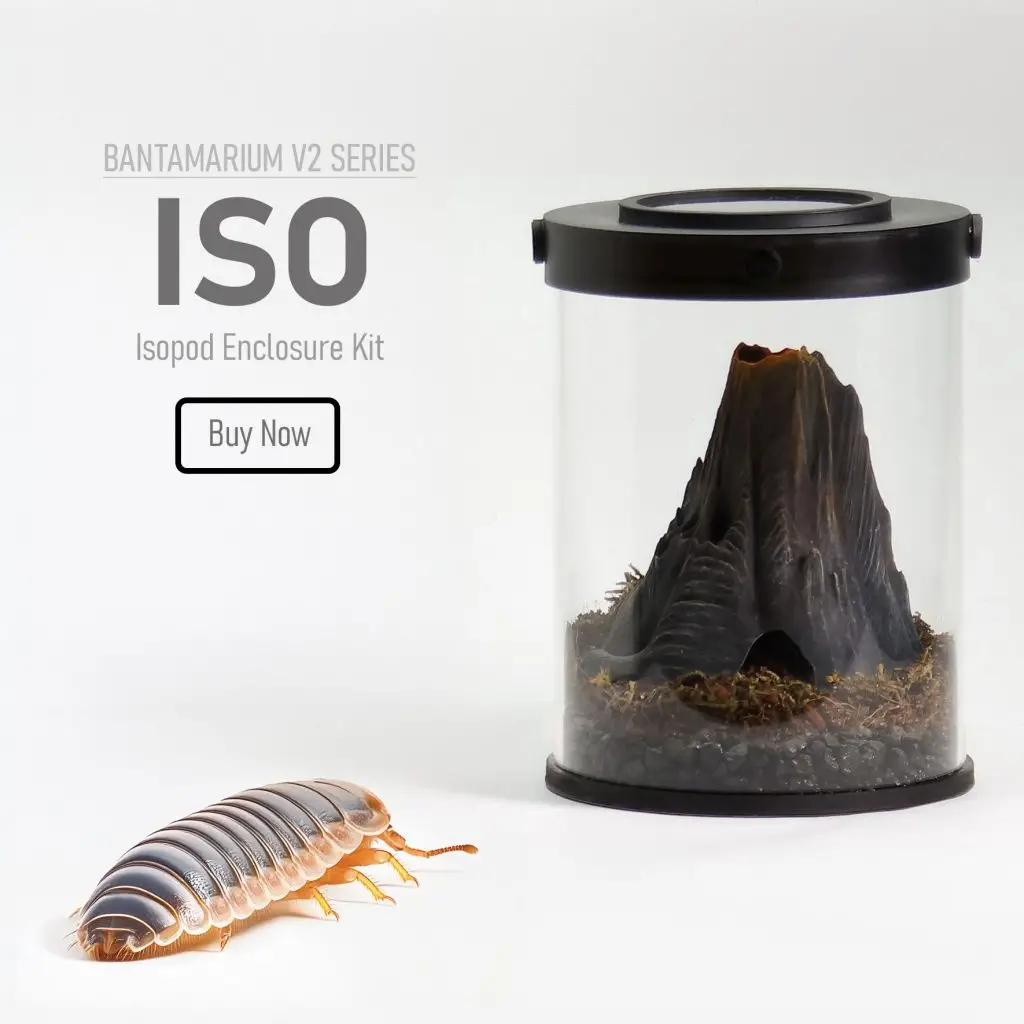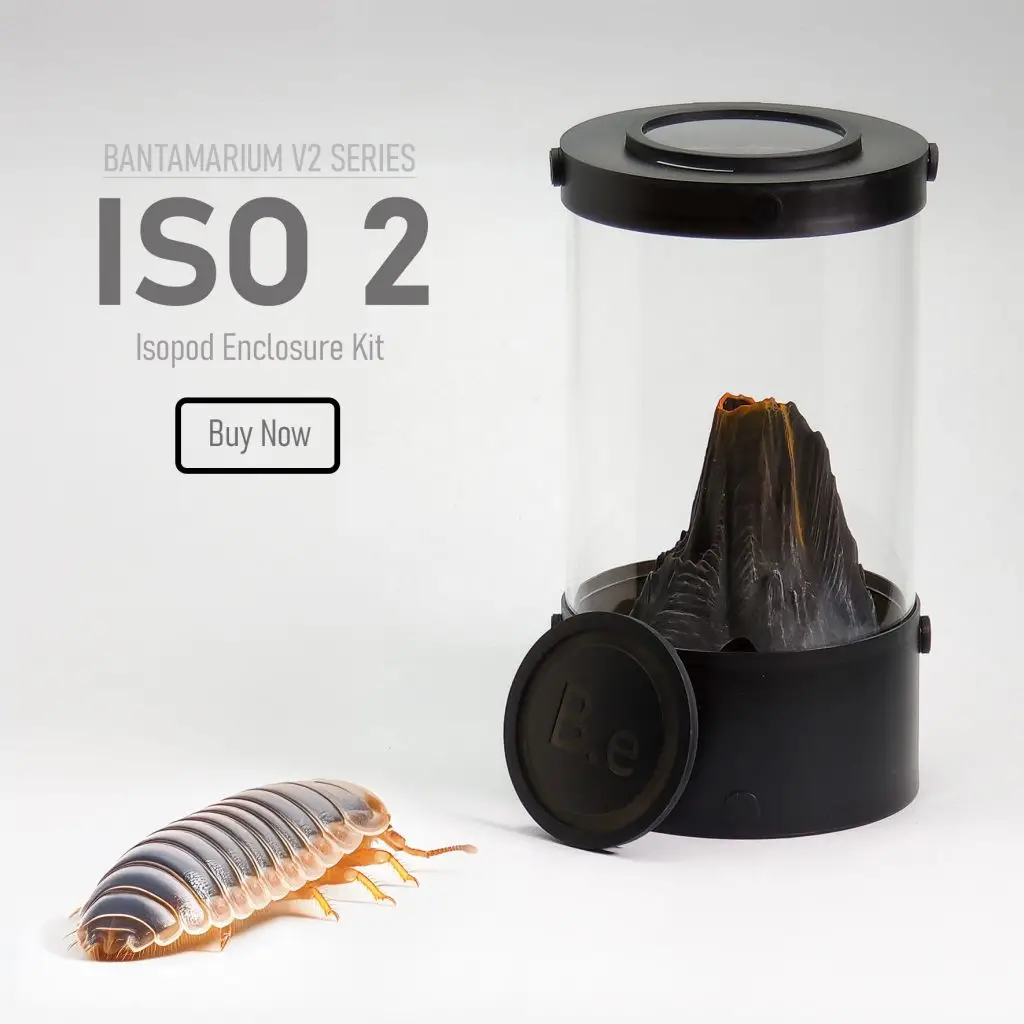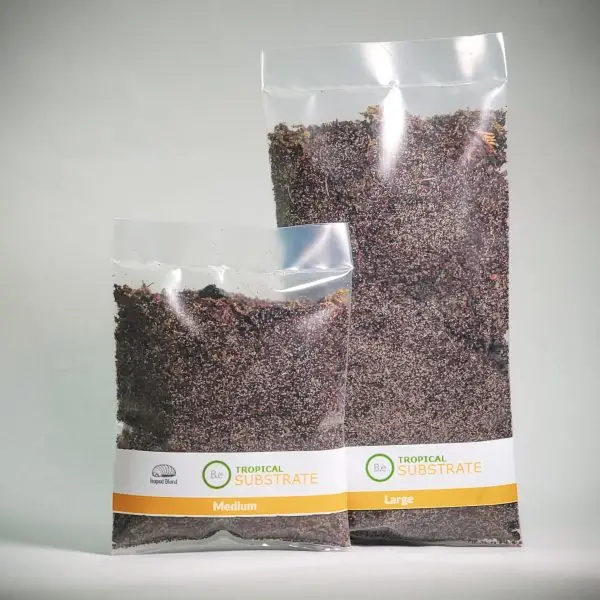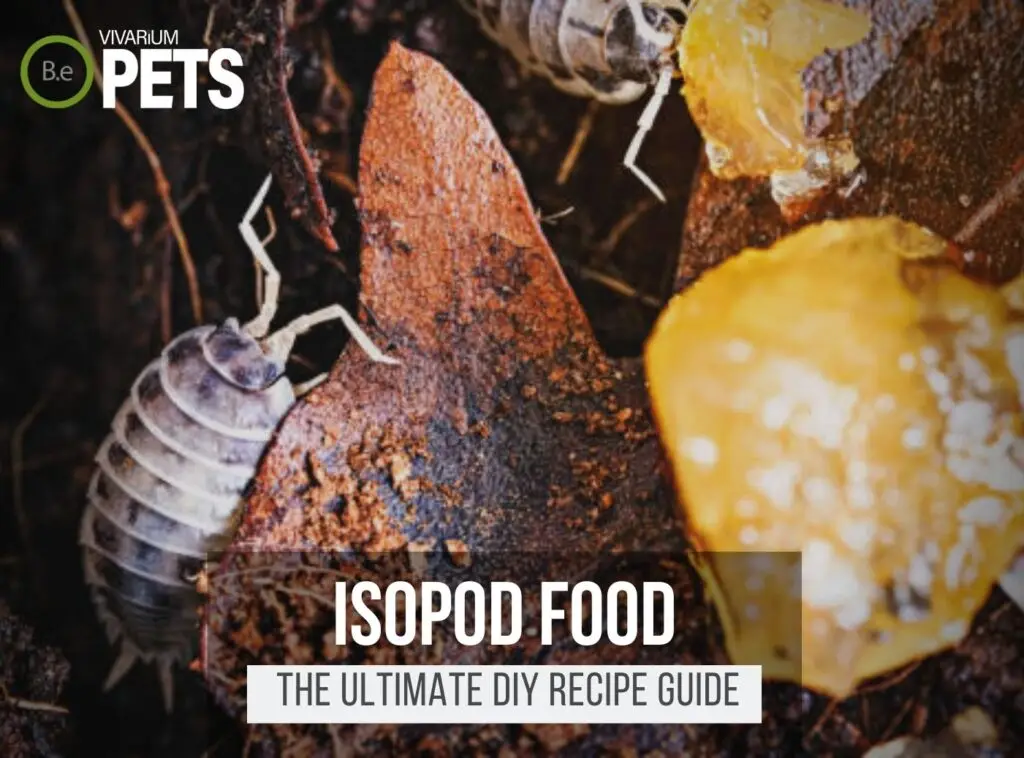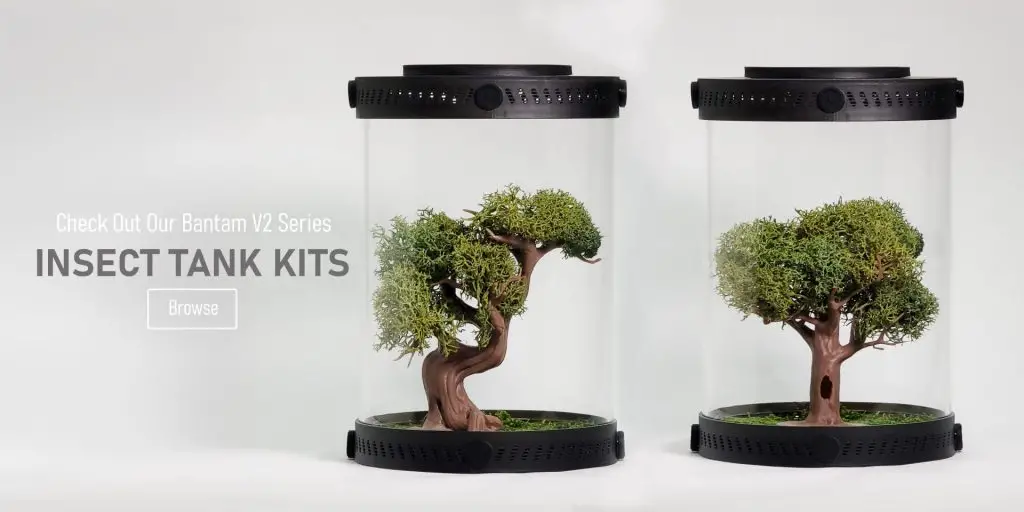Do you want to bring the wonder of the natural world into your home? Then why not consider the Yellow Spanish Isopod, also known as Armadillidium granulatum?
Not only is this little creature fascinating to observe, but it is also relatively easy to care for in captivity. Keep reading to discover the secrets to maintaining this species of terrestrial isopod as a pet.
| Characteristics: | |
|---|---|
| Common Name | Yellow Spanish Isopod, Granulated Pill Isopod |
| Family Name | Armadillidae |
| Scientific Name | Armadillidium granulatum |
| Use | Cleaning, Aerating Soil, Feeders |
| Temperament | Non-aggressive |
| Lifespan | 2-3 Years |
| Diet | Detritivore |
| Adult Size | up to 2.4 cm |
| Breeding Type | Egg Layer |
| Care Level | Easy |
| Minimum Tank Size | 5-10 Gallons |
| pH | 6.5-7.5 |
| Hardness | Soft |
| Temperature | 60-85°F |
Table Of Contents:
ToggleWhat Yellow Spanish Isopods?
Armadillidium granulatum is a species of terrestrial isopod belonging to the family Armadillidiidae.
Commonly referred to as The Yellow Spanish Isopod, they are often found in gardens and yards, living in damp dark places like rocks, leaf litter, and bark.
They are relatively simple to care for in captivity and make interesting little terrarium occupants.
Create an ideal habitat for your Yellow Spanish Isopods with our Customizable Isopod Terrarium Kits, which include everything you need to get started.
What Do Yellow Spanish Isopods Look Like?
Armadillidium granulatum is larger than most isopods of this species. They usually reach a size of 1 inch (2.5 cm), with a plump yellow freckled body and a hard brownish-gray carapace.
The carapace is generally covered in small bumps that give the isopod a granulated texture, which has provided the species its scientific name.
The dorsal side of the body has two “humps” over their back regions which are known as uropods.
These uropods help them move quickly when they sense danger. Additionally, they have seven pairs of legs; all of them are adapted for walking, with the ones closest to their heads having sensory functions.
Benefits Of Using Yellow Spanish Isopods
Armadillidium granulatum offers a unique and interesting look to any terrarium or paludarium. They are relatively easy to care for and maintain, making them ideal additions to any ecosystem.
Not only do they look great, but they are also beneficial to the overall health of the vivarium.
They provide beneficial aeration of the substrate, help to break down organic matter, as well as help maintain proper humidity and temperature levels.
They are also scavengers and detritivores, meaning they eat decaying vegetation and waste material, helping to keep the tank clean.


Yellow Spanish Facts
The Yellow Spanish Isopod is a terrestrial isopod found in gardens and yards.
Some areas known to be home to these animals are extreme southwestern Europe, where they can be found in a variety of habitats such as forests, grasslands, and even urban areas.
They have an omnivorous diet and are relatively docile and easy to care for, with a lifespan of up to 1 year and the ability to breed successfully in captivity.
Habitat
Armadillidium granulatum is native to the Iberian Peninsula and can be found in Spain and other parts of southwestern Europe, where they are widely distributed.
The natural environment of Armadillidium granulatum is typically damp and cool with plenty of places to hide and lots of decaying material for food.
Yellow Spanish Isopods are known to hide in the earth and brambles during the day, coming out to feed at night.
In the wild, these animals naturally form large aggregations to survive. These aggregations are often seen in the corners of gardens and under rocks.
It is thought that by forming these large groups, they are more easily able to ward off predators and regulate their temperature.
Their natural habitat has a consistently cool temperature, with high levels of humidity.
Replicate their natural habitat perfectly with our Bioactive Isopod Substrate Blend, designed to provide the ideal moisture and organic content for your isopods.
Diet
In their natural habitat, Armadillidium granulatum primarily feeds on decaying plants, fungi, lichens, algae, and roots.
They are detrivores and can also feed on small decaying insects and other invertebrates.
They can quickly process plant matter and create their own compost or leaf litter that can then be utilized by the terrarium ecosystem.
Isopods will even eat the frass (feces) and castings of other animals as well. This helps speed up the cycling of nutrients, creating a healthier environment.
Temperament
Armadillidium granulatum has a relatively benign temperament when it encounters humans or other animals.
They are voracious scavengers and typically remain motionless when picked up or handled, making them pleasant pets.
This species is often quite sociable and enjoys being in the company of other isopods; however, they can be gentle to one another and would rarely fight or bite for territorial reasons.
They enjoy having their habitats enriched with enclosure décor and are often seen playing around in their substrate and hiding items.
Interestingly, they can also be conditioned to eat from human hands, becoming quite tame over time.
Lifespan
The Yellow Spanish Isopod has a relatively short lifespan compared to other isopods.
On average, they will live anywhere from 12-36 months in captivity, depending on the particular environment and care that they are receiving.
The life cycle of the Yellow Spanish Isopod follows a typical pattern that begins with the Egg Stage.
The eggs typically hatch within 2-3 weeks and enter the Nymph Stage.
During this stage, they will shed their exoskeleton several times as they grow in size and reach maturity.
After they have molted a few times and grown sufficiently, they will then enter the Adult Stage. During the adult stage, they will reproduce and the cycle begins again.
Generally, adult isopods will eat less and move about less as their lifespan draws to a close. This is one indication that the isopod has entered its senior life stage.
Soon after, the isopod will enter a pupal stage in which its body becomes encased in a hardened substance and it is no longer active or feeding. In this state, it will stay until it passes away.
Breeding
Armadillidium granulatum reproduces by a process called parthenogenesis, which is a form of asexual reproduction.
This means that the female produces a second generation without having to mate with a male. The young are then born as clones of their mother.
Yellow Spanish Isopods are known to produce large litters, with female Isopods producing up to 40 young in a single gestation period.
The mating process for Armadillidium granulatum is also rather simple.
Males and females will run into each other and engage in a courtship ritual, after which the male will deposit spermatozoa in a pouch on the female.
The female is then able to store the sperm cells until she is ready to use them to reproduce.
The embryonic development process is relatively short and takes around 5 days. During this time the female will provide nutrients and protection to the developing young.
Once the development is complete, the female will deposit her young into the environment in a brood pouch, with each female producing up to 40 young per brood.
While the reproductive process of Armadillidium granulatum is relatively simple, they are quite voracious and can quickly become overpopulated in a given area, which can lead to other issues.
Where To Find Yellow Spanish Isopods
Finding Armadillidium granulatum in the wild can be a bit of a challenge, but with a bit of patience and determination, it can be done.
They are most commonly found in moist places like leaf litter, damp bark, and gardens, as well as underneath stones and rocks.
The best way to find them is to look in the early morning or at night when they are most active.
They are also commonly found in pet stores and can be ordered online from specialty dealers.
Be sure to purchase healthy specimens and keep them in the right environment to ensure they thrive in captivity.
When selecting Armadillidium granulatum for sale, it’s important to ensure you are selecting healthy specimens. Check to make sure the carapace is hard and the isopod is not sluggish or lethargic.
Yellow Spanish Isopod Care
For proper care of Armadillidium granulatum, provide a sealed terrarium with a damp substrate like coco coir or peat moss.
Maintain humidity levels between 75-80% by misting twice a day and keeping organic materials and live terrarium plants in the enclosure.
With proper care, these adorable little bugs can live up to two to three years in captivity.
Tank Requirements
The ideal tank for Armadillidium granulatum is an enclosed plastic or glass vivarium with access to ventilation and airflow.
The tank needs to provide a humid and warm environment, with a terrarium substrate that is soft and retains moisture.
The pH should be kept between 5.5 and 7.5, and the hardness levels should stay between 10 and 1,500 ppm.
The species prefers a temperature range between 68°F and 86°F, and further benefits from small amounts of sunlight or some kind of terrarium light for a few hours a day.
Providing plenty of hiding places and substrate mounds is also important for these little bugs.
What Do Yellow Spanish Isopods Eat?
Feeding your Yellow Spanish Isopods is an important part of keeping them healthy and happy.
It is important to provide them with the appropriate nutrition for their size and age.
When it comes to what to feed them, the best options are freeze-dried or freshly decaying foods. Common foods that Armadillidium granulatum may enjoy include:
- Freeze-dried bloodworms
- Decaying fruit flies and tiny flying insects
- Commercial commercially prepared isopod diets
- Cooked and mashed potatoes
- Cooked and mashed sweet potato
- Cooked and mashed carrots
- Rolled oats
- Cooked and mashed spinach
- Salad greens
You can also feed them algae tablets, small pieces of coconut, or freshly fallen leaves. It is important to vary the foods you offer, as well as the sizes.
You may also want to provide a shallow dish of water or mist the terrarium a few times each day to prevent dehydration and help them keep hydrated.
If you’re more of an avid hobbyist like myself, be sure to check out my ultimate DIY Isopod food guide. I give a more in-depth explanation of the best foods and my favorite recipe.
Best Tankmates For Yellow Spanish Isopods
When selecting the best tankmates for Armadillidum granulatum, it’s important to consider species that have similar needs and beneficial qualities.
Some of the best tankmates for Clown Isopods include other isopod species such as Cubaris, Sow bugs, and trilobites.
These species require the same setup and environmental conditions and are also beneficial janitors that help keep the tank clean.
Other arthropod species can also be kept with these isopods, such as springtails, millipedes, and scorpions.
The presence of these animals can be a source of amusement, but the species chosen must be gentle and not aggressive so that they don’t harm the Yellow Spanish Isopods.
In any case, Yellow Spanish Isopods are best kept in a single-species habitat, as this reduces the risk of aggression and competition for resources.
Conclusion
In conclusion, Armadillidium granulatum are fascinating creature that can make interesting and rewarding terrarium companions.
With the proper enclosure, substrate, humidity, temperature, diet, and supplements, these isopods can easily be kept at home.
With a long lifespan, nearly three years, and the ability to produce offspring, this species of isopod can be a great addition to the home for years to come.
Create the ideal habitat for your isopods with our species-specific soil mixes and Insect Enclosure Kits. These products provide everything you need for a successful and thriving isopod colony.
Frequently Asked Questions
Optimal humidity for Armadillidium granulatum is 75–80%.
The common name for Armadillidium granulatum is Yellow Spanish Isopod.
The size of a granulatum isopod varies, but they typically measure up to 2.4cm.
The diet of Armadillidium granulatum typically consists of plant matter, decomposing organic material and small insects.

